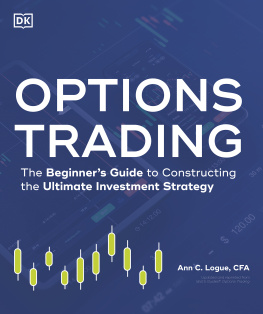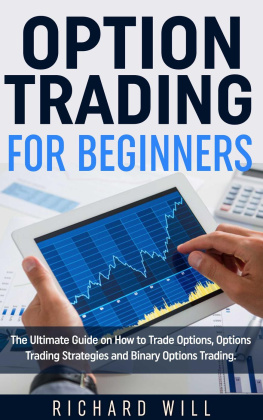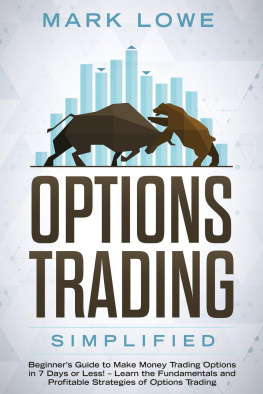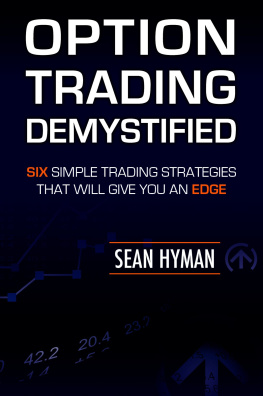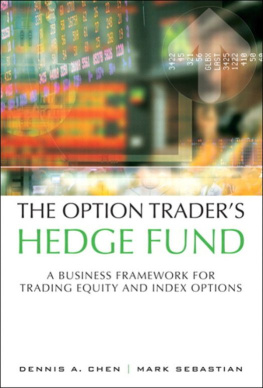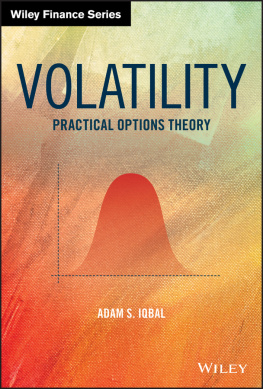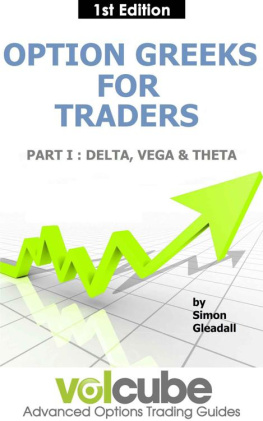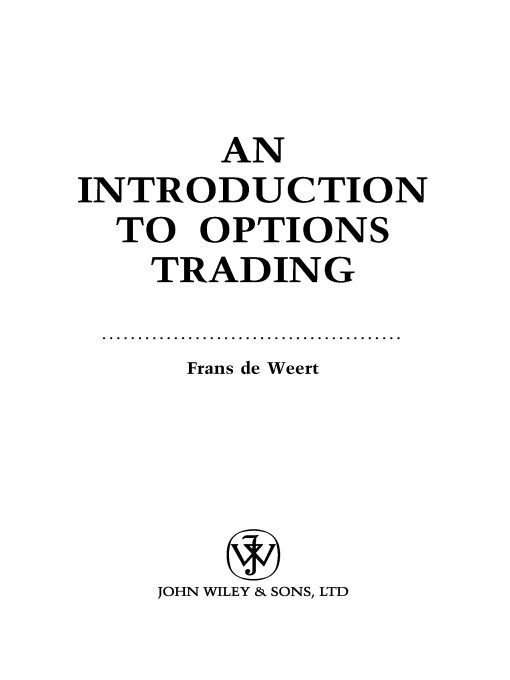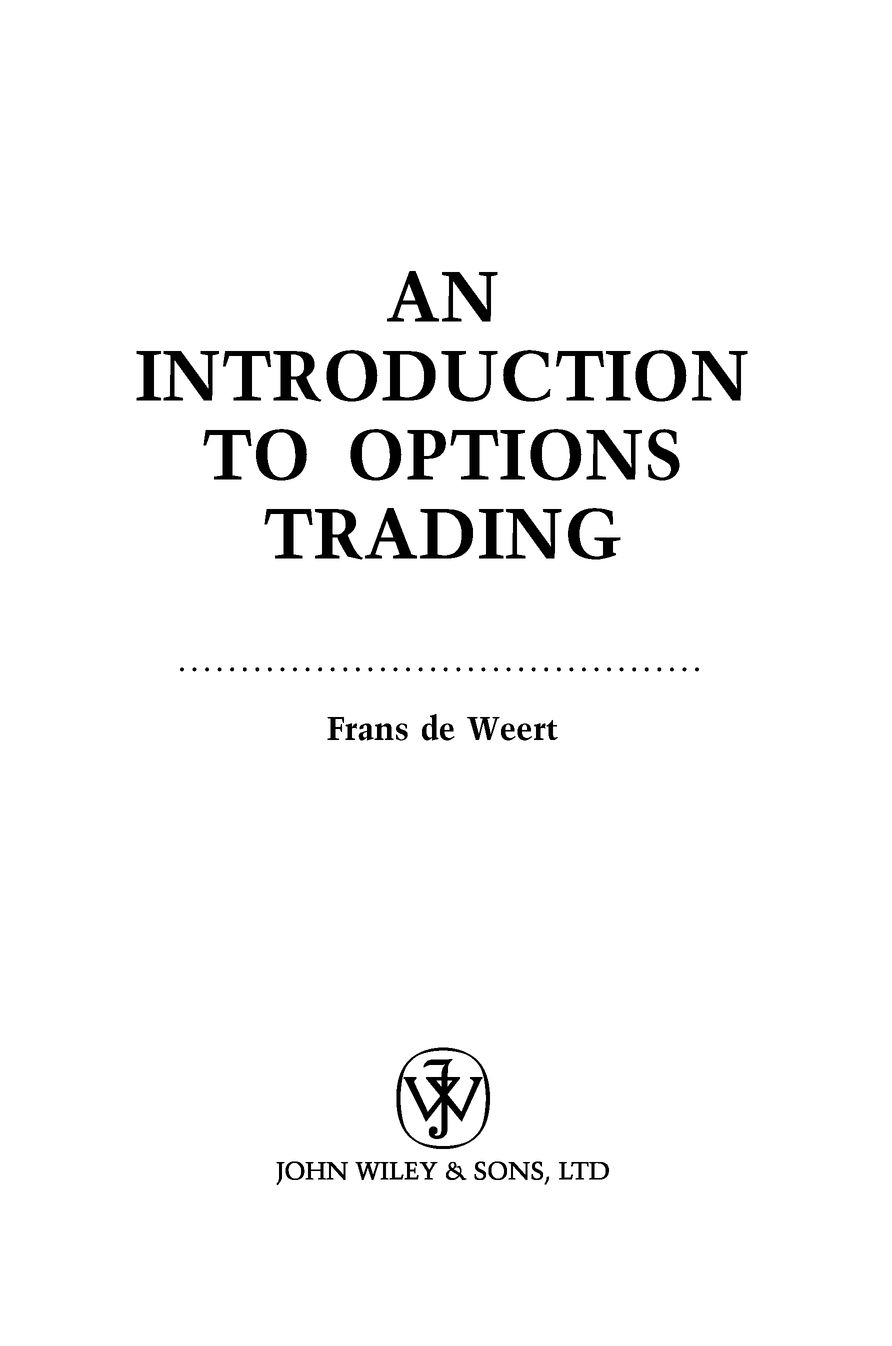Table of Contents
The Securities & Investment Institute
Mission Statement:
To set standards of professional excellence and integrity for the investment and securities industry, providing qualifications and promoting the highest level of competence to our members, other individuals and firms.
The Securities and Investment Institute is the UKs leading professional and membership body for practitioners in the securities and investment industry, with more than 16,000 members with an increasing number working outside the UK. It is also the major examining body for the industry, with a full range of qualifications aimed at people entering and working in it. More than 30,000 examinations are taken annually in more than 30 countries.
You can contact us through our website www.sii.org.uk
Our membership believes that keeping up to date is central to professional development. We are delighted to endorse the Wiley/SII publishing partnership and recommend this series of books to our members and all those who work in the industry.
As part of the SII CPD Scheme, reading relevant financial publications earns members of the Securities & Investment Institute the appropriate number of CPD hours under the Self-Directed learning category. For further information, please visitwww.sii.org.uk/cpdscheme
Ruth Martin
Managing Director
To Jan and Annelies
PREFACE
This book is appropriate for people who want to get a good overview of options in practice. It especially deals with hedging of options and how option traders earn money by doing so. To point out where the profit of option traders comes from, common terms in option theory will be explained, and it is shown how they relate to this profit. The use of mathematics is restricted to a minimum. However, since mathematics makes it possible to lift analyses to a non-superficial level, mathematics is used to clarify and generalize certain phenomena.
The aim of this book is to give both option practitioners as well as interested individuals the necessary tools to deal with options in practice. Throughout this book real life examples will illustrate why investors use option structures to satisfy their needs. Although understanding the contents of this book is a prerequisite for becoming a good option practitioner, a book can never produce a good trader. Ninety percent of a traders job is about dealing with severe losses and still being able to make the right decisions if such a loss occurs. The only way to become a good trader is to accept that, when helping clients to execute their option strategies, the trader will inevitably end up with positions where the risk reward is against him but the odds are in his favour. For that reason a one-off loss will almost always be larger than a one-off gain. But, if a trader executes many deals he should be able to make money on the small margin he collects on every deal even if he gets a few blow-ups.
ACKNOWLEDGEMENTS
This book is based on knowledge acquired during my work as a trader at Barclays Capital. Therefore, I would like to thank my colleagues at Barclays Capital who have been very helpful in teaching me the theory and practice of options. At Barclays Capital I would especially like to thank Faisal Khan and Thierry Lucas for giving me all the opportunities to succeed in mastering and practising option trading. I would also like to thank Thierry Lucas for his many suggestions and corrections when reviewing my work and Alex Boer for his mathematical insights. I would especially like to thank Karma Dajani for first giving me a great foundation in probability theory, then supervising my graduate dissertation in mathematics and, lastly, reviewing this book. Special thanks goes out to my father, Jan de Weert, for having been a motivating and helpful force in mastering mathematics throughout my life, and for checking the book very thoroughly and giving me many suggestions in rephrasing sentences and formulae more clearly.
INTRODUCTION
Over the years derivative securities have become increasingly important. Examples of these are options, futures, forwards and swaps. Although every derivative has its own purpose, they all have in common that their values depend on more basic variables like stocks and interest rates. This book is only concerned with options, but once the theory behind options is known, knowledge can easily be expanded to other derivatives.
This book has three objectives. The first is to introduce terms commonly used in option theory and explain their practical interpretation. The second is to show where option traders get their profit and how these commonly used terms relate to this profit. The last objective is to show why companies and investors use options to satisfy their financial needs.
Chapter 1
OPTIONS
Options on stocks were first traded on an organized exchange in 1973. That very same year Black and Scholes introduced their famous Black-Scholes formula. This formula gives the price of an option in terms of its parameters, like the underlying asset, time to maturity and interest rate. The formula and the variables it depends on will be discussed in more detail in the next chapters. Since 1973 option markets have grown rapidly, not only in volumes but also in the range of option products to be traded. Nowadays, options can be traded on many different exchanges throughout the world and on many different underlying assets. These underlying assets include stocks, stock indices, currencies and commodities.
There are two general kinds of options, the call option and the putoption. A call option gives the holder the right, but not the obligation, to buy the underlying asset for a pre-specified price and at a pre-specified date. A put option gives the holder the right, but not the obligation, to sell the underlying asset for a pre-specified price and at a pre-specified date. This pre-specified price is called the strike price; the date is known as the expiration date, or maturity. The underlying asset in the definition of an option can be virtually anything, like potatoes, the weather, or stocks. Throughout this book the underlying asset will be taken to be a stock.
When the owner of a call option chooses to buy the stock, it is said that he exercises his option right. Of course, the same holds for the owner of a put option, only in this case the owner chooses to sell the stock, but it is still referred to as exercising the option. If the option can only be exercised on the expiration date itself, the option is said to be a European option. If it can be exercised at any time up to expiration, the option is an American option. Although there are many other option types, the most important ones have already been covered: American call option, American put option, European call option and the European put option. The vast majority of the options that are traded on exchanges are American. However, it is useful to analyze European options, because properties of American options can very often be deduced from its European counterpart.
Before an example is given, it is worthwhile to look at the boldface sentence in the definition of an option. The holder of an option is not obligated to exercise the option. This means that at maturity the holder can decide not to do anything. This is exactly why it is called an option, the holder has a choice of doing something. Because of this choice, the largest loss an owner of an option can face is the price paid for the option.


